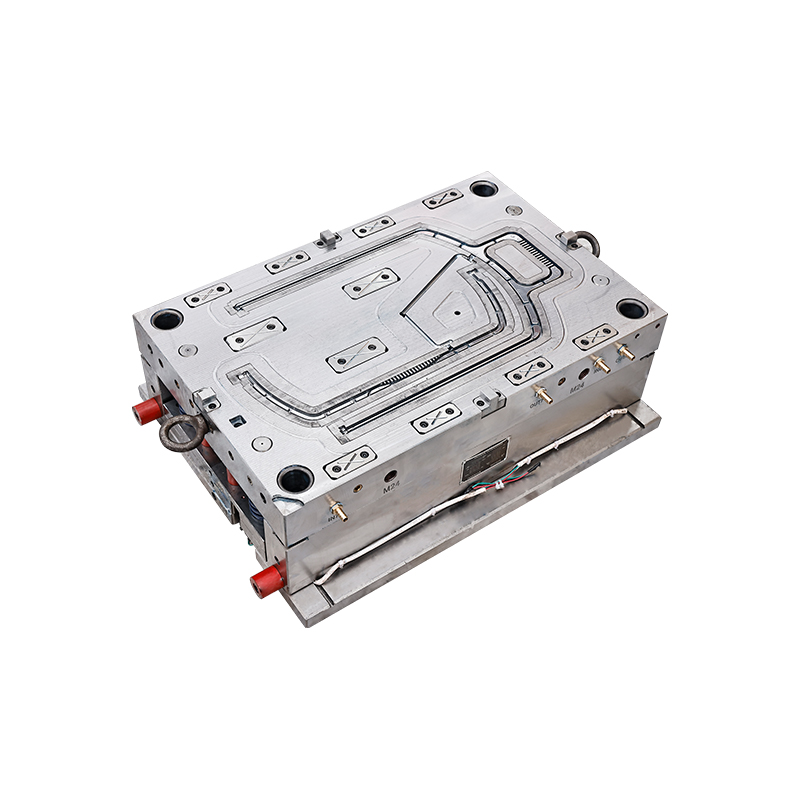
Non-slip Plastic Stool Mold: Ensuring Safety and Convenience in Everyday Use
In today's fast-paced and multitasking world, convenience and safety are key factors in the design and manufacturing of everyday objects. One such object is the non-slip plastic stool, which has gained popularity for its practicality, durability, and user-friendly features. Behind the production of these essential items lies a crucial process: the creation of non-slip plastic stool molds.
Non-slip plastic stools are versatile pieces of furniture that find their applications in various settings, be it homes, workplaces, schools, or public spaces. Unlike traditional stools, non-slip plastic stools are specially designed to provide stability, grip, and safety. They boast a unique texture on their surface or legs, preventing users from slipping or losing their balance while seated or standing on them. This innovative feature ensures that individuals of all ages, including children and the elderly, can use these stools with confidence and without the risk of accidents.
Significance of Non-slip Plastic Stool Molds
Non-slip plastic stool molds play a crucial role in the production of these functional and safe stools. These molds provide the framework and structure necessary to shape and create the desired design of the stool. By using molds, manufacturers ensure consistency and precision in each stool they produce. The molds are responsible for imparting the non-slip texture on the surfaces or legs of the stools, making them reliable and secure for everyday use.
Designing and manufacturing non-slip plastic stool molds requires expertise, precision, and attention to detail. The process involves multiple steps to ensure the molds meet the desired specifications. Here is a brief overview of the process:
1. Design Concept: The first step in creating non-slip plastic stool molds is to conceptualize the design. Manufacturers work closely with designers and engineers to come up with an ergonomic and visually pleasing stool design that incorporates the non-slip feature. Factors such as size, shape, texture, and weight-bearing capacity are taken into consideration during this phase.
2. CAD Modeling: Once the design concept is finalized, it is translated into a computer-aided design (CAD) model. This allows for precise measurements and geometric accuracy, taking into account all the intricate details of the stool's structure, including the non-slip texture. The CAD model serves as a blueprint for the creation of the mold.
3. Mold Creation: With the CAD model in hand, the next step is to manufacture the mold. This involves using specialized machinery and techniques, such as CNC milling or computer numerical control, to carve a mold out of a metal block or insert. The mold is carefully crafted, ensuring that every detail, including the non-slip texture, is accurately replicated.
4. Injection Molding: Once the mold is ready, the manufacturing process moves to injection molding. In this step, molten plastic material, usually high-density polyethylene (HDPE) or polypropylene (PP), is injected into the mold cavity. The mold's precise design ensures that the plastic fills the cavity evenly, creating a durable and seamless non-slip plastic stool.
Benefits of Non-slip Plastic Stool Molds
The use of non-slip plastic stool molds provides several advantages for both manufacturers and end-users. Let's explore some of these benefits:
1. Safety: The primary advantage of non-slip plastic stool molds is the improved safety they offer. The non-slip texture on the stool's surface or legs prevents accidents caused by slipping or losing balance. This makes the stools suitable for a wide range of applications, including homes, schools, healthcare facilities, and restaurants.
2. Durability: Non-slip plastic stool molds facilitate the production of sturdy and long-lasting stools. The high-quality plastic used in the injection molding process ensures that the stools are resistant to wear and tear, making them suitable for heavy use.
3. Ease of Cleaning and Maintenance: Plastic stools created using non-slip plastic stool molds are easy to clean and maintain. The non-slip surface prevents dirt and grime from accumulating, enabling users to simply wipe or wash the stools to keep them clean and hygienic.
4. Cost-effectiveness: Non-slip plastic stool molds streamline the manufacturing process, allowing for efficient mass production. This reduces costs associated with labor and production time, making these stools an affordable option for individuals and businesses alike.

 English
English  русский
русский Español
Español






